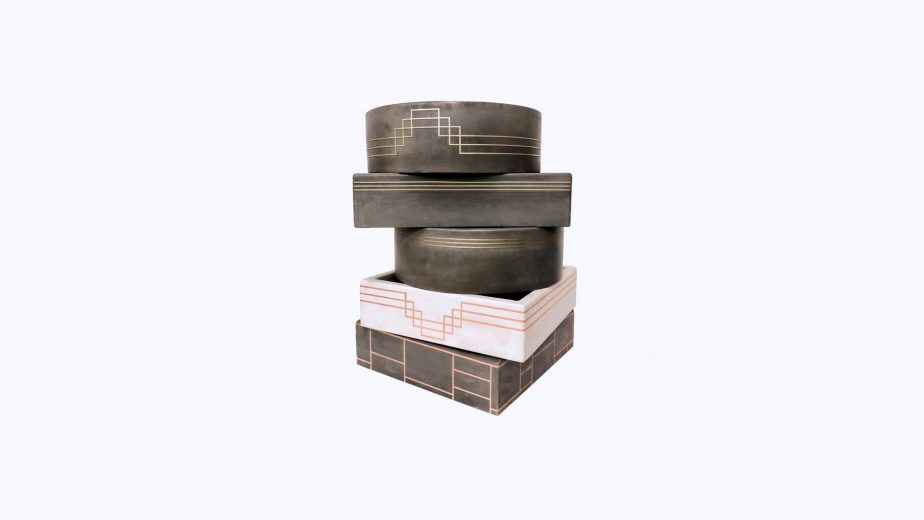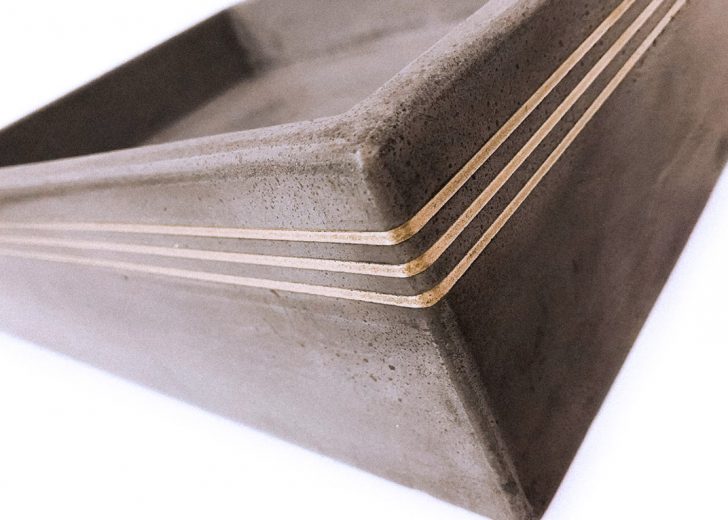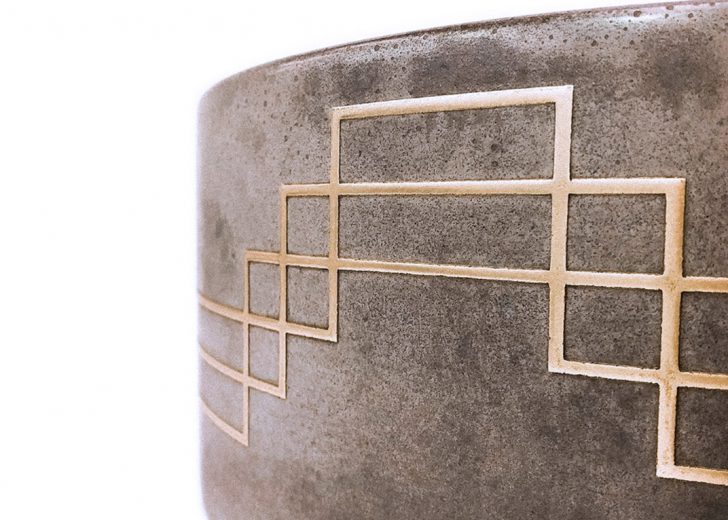A Concrete Embellishment
Concrete furniture has grown in popularity for interior furnishing dramatically in recent times, requiring a new level of innovation to push the boundaries of design and what it means to be contemporary.
In response to this, Fremantle’s Concrete Studio has announced their new Elements range, which sees contemporary basins relaunched with fine metal geometric patterns inset, using Axolotl’s revolutionary metal bonding technique.
“The process has taken a lot of experimentation, but we think this is a first for concrete basins worldwide. We’re very happy with the results and are proud to still be breaking new ground in the industry,” says owner/designer Philip Martin.
Originally an architect, Philip spent many years working apartment conversion projects for SE1 Design on London’s Southbank, transforming heritage buildings into industrial-chic apartments.
It was during this time he developed an interest in the raw, yet refined qualities of concrete as a material in bathroom and kitchen design. Philip left the design industry altogether upon relocating to Perth, however the drive to create lured him back, and Concrete Studio was born.
“I love working with concrete and it’s always been part of my design palette. At the same time, it can be both cold and warm, neutral and a feature, silky smooth or very coarse. It has depth and texture and can be formed into anything. What’s not to love?” Philip says.
The collection of concrete vanities is handmade using the process of spray-casting which allows for sleek shapes that are light-weight. The art lies in developing the prototypes for the moulds, which often take multiple incarnations to achieve the right balance both functionally and aesthetically.
“We’re very particular about the exact final size and shape of all our basins, and sometimes what seems like the easiest design can take the longest amount of time to perfect.”
“It’s very important that the proportion of length, width and edge height work well, but also the thickness of the lip. The first models had perfect vertical sides inside and out. These looked great as prototypes, but we then made rubber moulds and took our first castings, somehow the vertical sides that looked so good in the model didn’t work out in the final product.”



